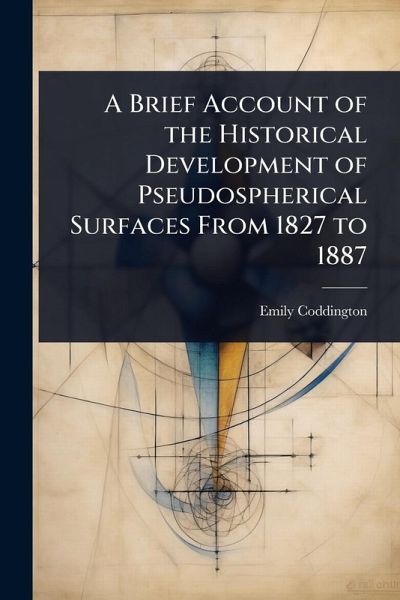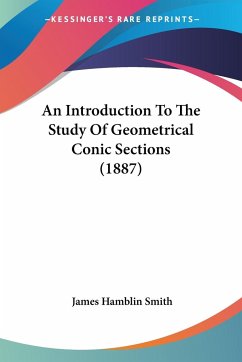
A Brief Account of the Historical Development of Pseudospherical Surfaces From 1827 to 1887
Versandkostenfrei!
Versandfertig in über 4 Wochen
15,99 €
inkl. MwSt.
Weitere Ausgaben:

PAYBACK Punkte
8 °P sammeln!
âA Brief Account of the Historical Development of Pseudospherical Surfaces From 1827 to 1887â delves into the intricate world of nineteenth-century geometry, tracing the evolution of our understanding of pseudospherical surfaces. This detailed account explores the key properties of these surfaces, including asymptotic curves, lines of curvature, and geodesic curvature, providing a comprehensive overview of the field's development. The book examines the contributions of leading mathematicians like Enneper and Weingarten, shedding light on the concepts of focal surfaces, orthogonal trajectorie...
âA Brief Account of the Historical Development of Pseudospherical Surfaces From 1827 to 1887â delves into the intricate world of nineteenth-century geometry, tracing the evolution of our understanding of pseudospherical surfaces. This detailed account explores the key properties of these surfaces, including asymptotic curves, lines of curvature, and geodesic curvature, providing a comprehensive overview of the field's development. The book examines the contributions of leading mathematicians like Enneper and Weingarten, shedding light on the concepts of focal surfaces, orthogonal trajectories, and the behavior of ray systems. It covers essential topics such as radii of curvature, the linear element, and tangent planes, offering insights into the geometry of surfaces with constant negative Gaussian curvature. This historical study provides a valuable resource for mathematicians and historians of science, illuminating the foundational work that shaped modern geometry and offering a glimpse into the mathematical landscape of the late 19th century. Its enduring appeal lies in its meticulous treatment of a fascinating and historically significant area of mathematical research. This work has been selected by scholars as being culturally important, and is part of the knowledge base of civilization as we know it. This work was reproduced from the original artifact, and remains as true to the original work as possible. Therefore, you will see the original copyright references, library stamps (as most of these works have been housed in our most important libraries around the world), and other notations in the work. This work is in the public domain in the United States of America, and possibly other nations. Within the United States, you may freely copy and distribute this work, as no entity (individual or corporate) has a copyright on the body of the work. As a reproduction of a historical artifact, this work may contain missing or blurred pages, poor pictures, errant marks, etc. Scholars believe, and we concur, that this work is important enough to be preserved, reproduced, and made generally available to the public. We appreciate your support of the preservation process, and thank you for being an important part of keeping this knowledge alive and relevant.








![Euclid's Elements of Geometry [Book 1-6, 11,12] With Explanatory Notes; Together With a Selection of Geometrical Exercises. to Which Is Prefixed an Intr., Containing a Brief Outline of the History of Geometry. by R. Potts. [With] Appendix Cover Euclid's Elements of Geometry [Book 1-6, 11,12] With Explanatory Notes; Together With a Selection of Geometrical Exercises. to Which Is Prefixed an Intr., Containing a Brief Outline of the History of Geometry. by R. Potts. [With] Appendix](https://bilder.buecher.de/produkte/74/74762/74762470n.jpg)



